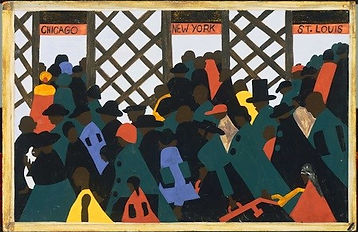Ms. Zakalik
U.S. History
World War I
Migrations to the Cities


When World War I began in 1914 it cut off the continuous flow of immigrants that had been coming from all of Europe and parts of Asia. This resulted in a shortage of cheap immigrant labor in America’s northern industrial cities. It became even worse when the United States got involved in the war because we were sending men to fight and needed an increased production of goods. On top of this, the southern agricultural industry was not doing well with floods ruining their crops and African Americans very unhappy with their low paying jobs. Thousands of African Americans from the south headed north to get jobs that paid three times as much money as their old jobs. Northern industrialists were in need of more labor so badly that they recruited southerners by offering free train tickets to the north and west. By the end of 1919 one million African Americans had left the south to go work in northern factories and other industrial jobs. This is known as the Great Migration. Migration means to move from one part of a region to another, as many southern African Americans moved to the north. Due to the Great Migration the African American population of northern cities grew with New York increasing by 66 percent.
Migration to cities was important during World War I because it helped to give African Americans the fuel to fight for equal rights. With many men at war and no immigrants entering into the country African Americans played a major role in helping to provide the goods and supplies we needed. They took on the jobs in factories and other workplaces that the white men usually did. This helped to show that their race was equal to other races and that they should be treated the same. Without the Great Migration the War could have ended differently if our troops didn’t get the supplies that they needed and our country couldn’t function as it usually did.